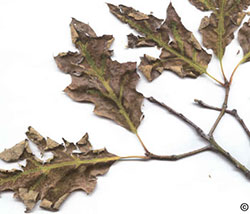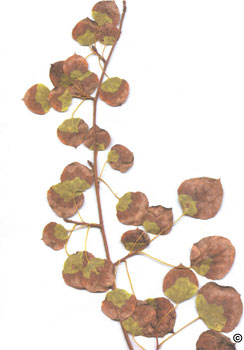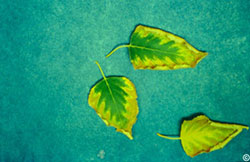Desiccation in woody plants is common in Colorado, because soils range from sandy to clay and plants rely almost totally on supplemental watering. In addition, nearly all woody plants found in Colorado are imported from different parts of the country and have varying moisture requirements.

Symptoms of desiccation appear when too little or too much water is available. It also occurs in plants that have weak root systems; most often in transplants. Too much water drives oxygen from the soil, which leaves roots unable to absorb water and nutrients. Symptoms of desiccation appear over the course of a day in small, newly transplanted plants. A large conifer may not show symptoms for a couple of years.

In response to desiccation, many plants will try to adapt. Established deciduous woody plants show the most obvious signs of desiccation. To conserve water, these plants often shed some or all their leaves. In the fall, early coloration is a sign of water stress. Cottonwoods, aspens and willows also drop twigs and small branches in an effort to conserve. After several years of inadequate water, the annual growth becomes weak.
Conifers are much less susceptible to desiccation. Their needles are well adapted to xeric conditions. If water stress does occur, it’s most likely to happen in spruce and fir. In these plants, you typically won’t see symptoms until the following growing season when stunted and off-color needles appear.

Desiccation in broad-leaved evergreens, such as Oregon grape and pyracantha, often appears in leaves, which brown at the margins. To protect broad-leafed evergreens, plant them in a protected area, such as the north side of a structure.
Don’t flood plants to correct water deficits. Flooding, even for a short period, can quickly kill a woody plant.
For “Fall & winter watering” refer to message number 1706.
For more information, see the following Colorado State University Extension fact sheet(s).
- Environmental Disorders of Woody Plants
- Drip Irrigation for Home gardens
- Fall and Winter Watering
- Evergreen Trees
- Deciduous Shrubs



